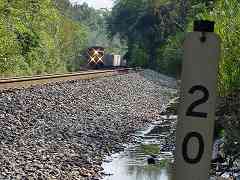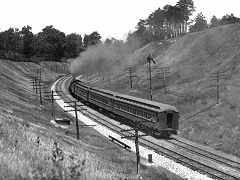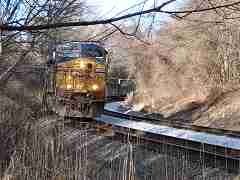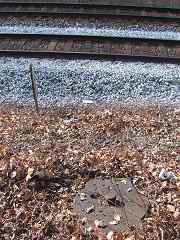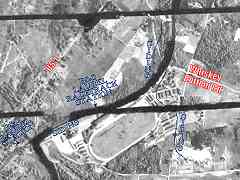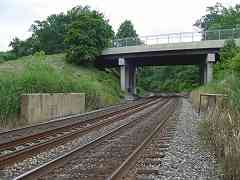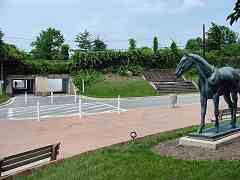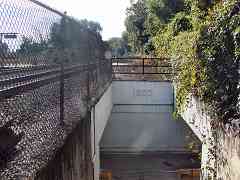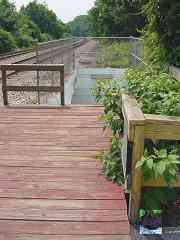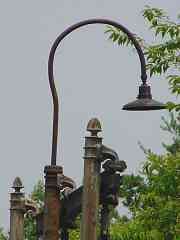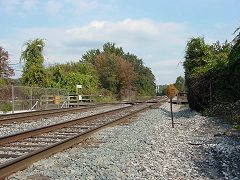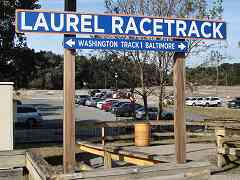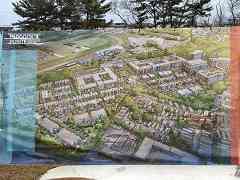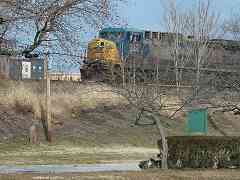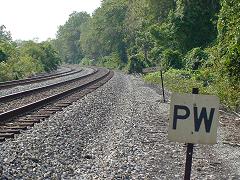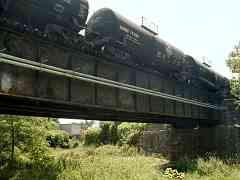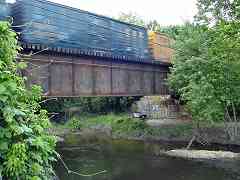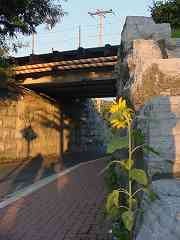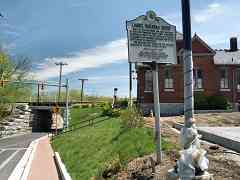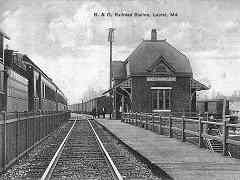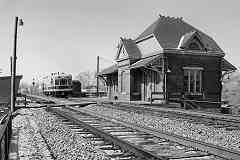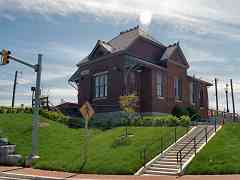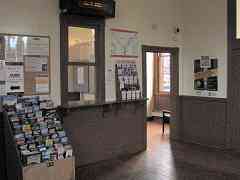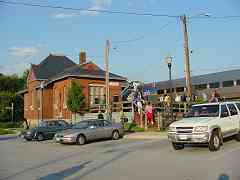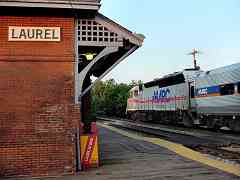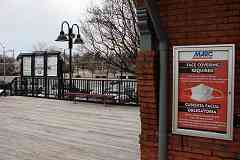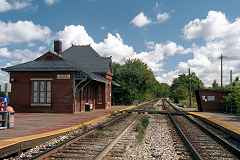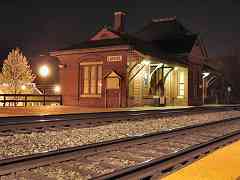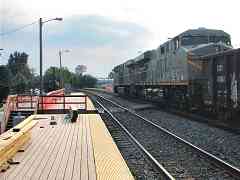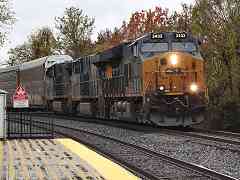|
Next, we reach Laurel Park racetrack, as depicted by this low-resolution
aerial dating to 1938. Ignore the thick black lines as they represent
gaps between images, and county borders where, unfortunately for
our purposes, the railroad runs.
B&O had three short sidings in this vicinity. The longest one (the
one that wandered to the south) may have served a quarry. Though it
appears on topographic maps from 1905 to 1945, there is no evidence of it
in this aerial. Site visits similarly turned up no surviving artifacts.
The shorter siding to the north is, however, visible on this 1938 aerial.
It had crossed Whiskey Bottom Road to reach industry on the north side of
that road. Evidence of the siding remains today in the form of grading.
The westernmost of the sidings ran parallel to the main line, and likely
carried supplies to the track, perhaps horses as well. It survives as
a flat graded area near milestone 21.
Sources put Laurel Speedway, a wooden race track for automobiles and bicycles,
in the vicinity of the intersection of MD 198 and MD 197, a location at the
lower left corner of this aerial. A Sun newspaper account reports B&O
built a spur to serve it, but I can't pick it out on this aerial or any topo
map. In any case, the Speedway was short lived.
Links:
quarry 1907,
1925 pic,
1925,
biker 1925,
bike race 1925
| 